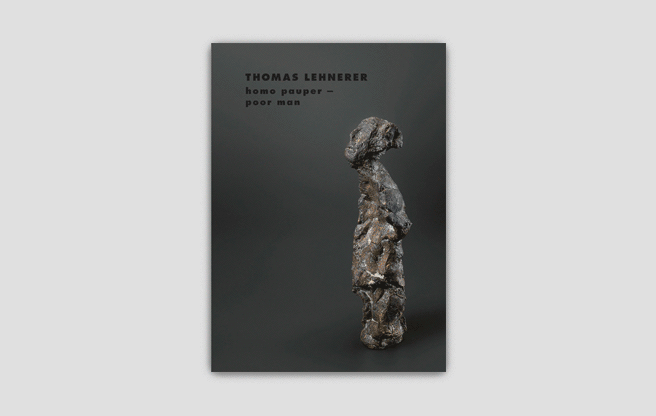Thomas Lehnerer
homo pauper – poor man
Thomas Lehnerer
homo pauper – poor man
Edited by Margrit Brehm, with a conversation between Thomas Lehnerer and Johannes Stückelberger (1993),
texts by Margrit Brehm and photographs by Dieter Schleicher. Translated by Patricia Aiken. Published by Ernest Rathenau Verlag, Karlsruhe 2019
Translated by Patricia Aiken
80 Seiten, text English, hardcover
245 × 173 × 11 mm, 456 gr, color
ISBN 978-3-946476-10-9
€ 28,00 (plus domestic shipping costs: € 3.75 / 1 copy, as of 01.01.2025)
Order via e-mail:
buch@ernest-rathenau-verlag.de
Thomas Lehnerer, artist, theologian, professor of esthetics, died at 39 in Munich in 1995.
His works are impressive due to their immediate and mindful presence, and his reflections have become even more relevant, given current pressing challenges.
Lehnerer’s figures, installations, series of paintings and drawings as well as theme-related works displayed in vitrines all confront us with different images of humans
and varied other images and ideas that were created by artists, religions and philosophies of different cultures and times.
They open up to us a “space of enlightened reflection” (Aby Warburg) and arouse our attention for the subtler undertones that go under in the din and clatter of the endless hectic pace of our lives.
Thomas Lehnerer’s works and thoughts make it clear that art can be a form of communication between people – in a very direct way, introducing new intellectual perspectives.
It is not about creating a sensational stir, breaking records or treating art as a commodity, but about what art can be to us beyond all the functions it serves in our society today.
It was important to us that the artist talk about his work himself in order to offer greater insight into the extraordinary bronze figures and drawings depicted.
Of particular significance is therefore Johannes Stückelberger’s interview with Thomas Lehnerer conducted in 1993 on the occasion of the “Thomas Lehnerer.
Homo Pauper” exhibition at the Kunstmuseum Basel, Switzerland, which we are making available here, since the original publication has been long out of print.
What makes this conversation particularly interesting is that it focuses primarily on the works of art, their appearance, and the respective theological and philosophical backgrounds that were important to the artist are discussed as well.
In addition, a variety of shorter texts are presented on some of the thoughts and concepts about the genesis and reception of art that Thomas Lehnerer developed as part of his postdoctoral thesis Methode der Kunst [Method of Art], his theory of art.
